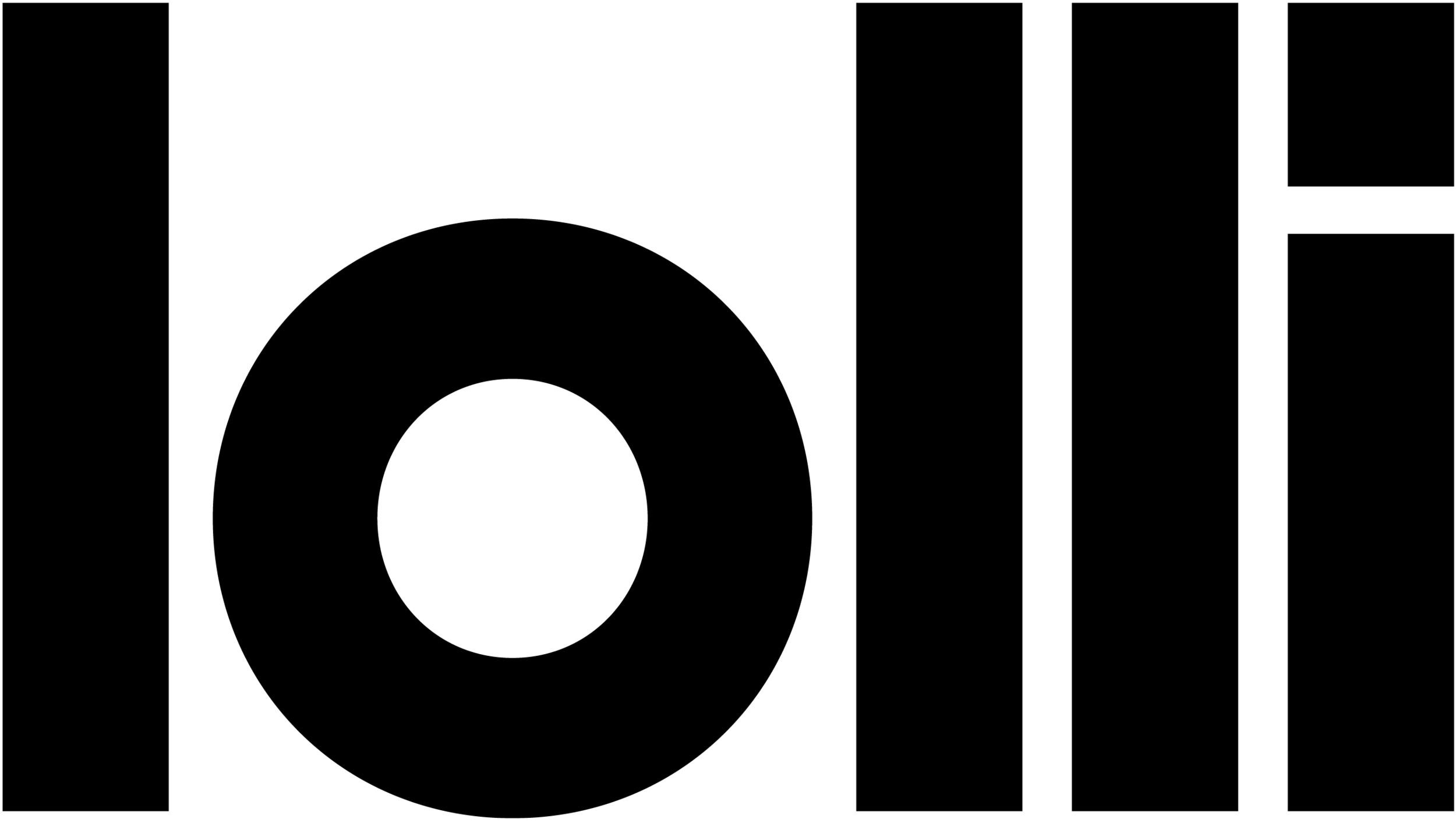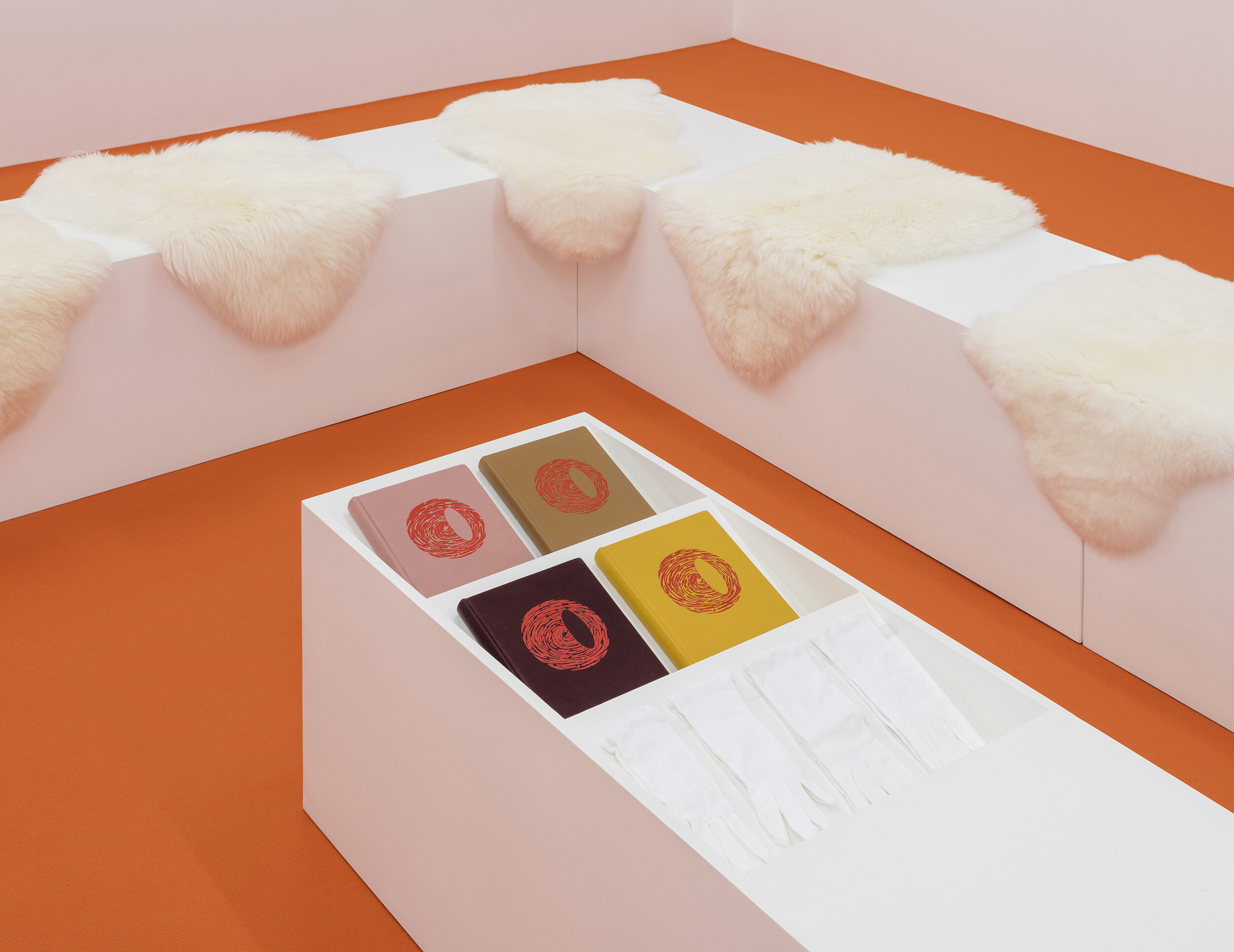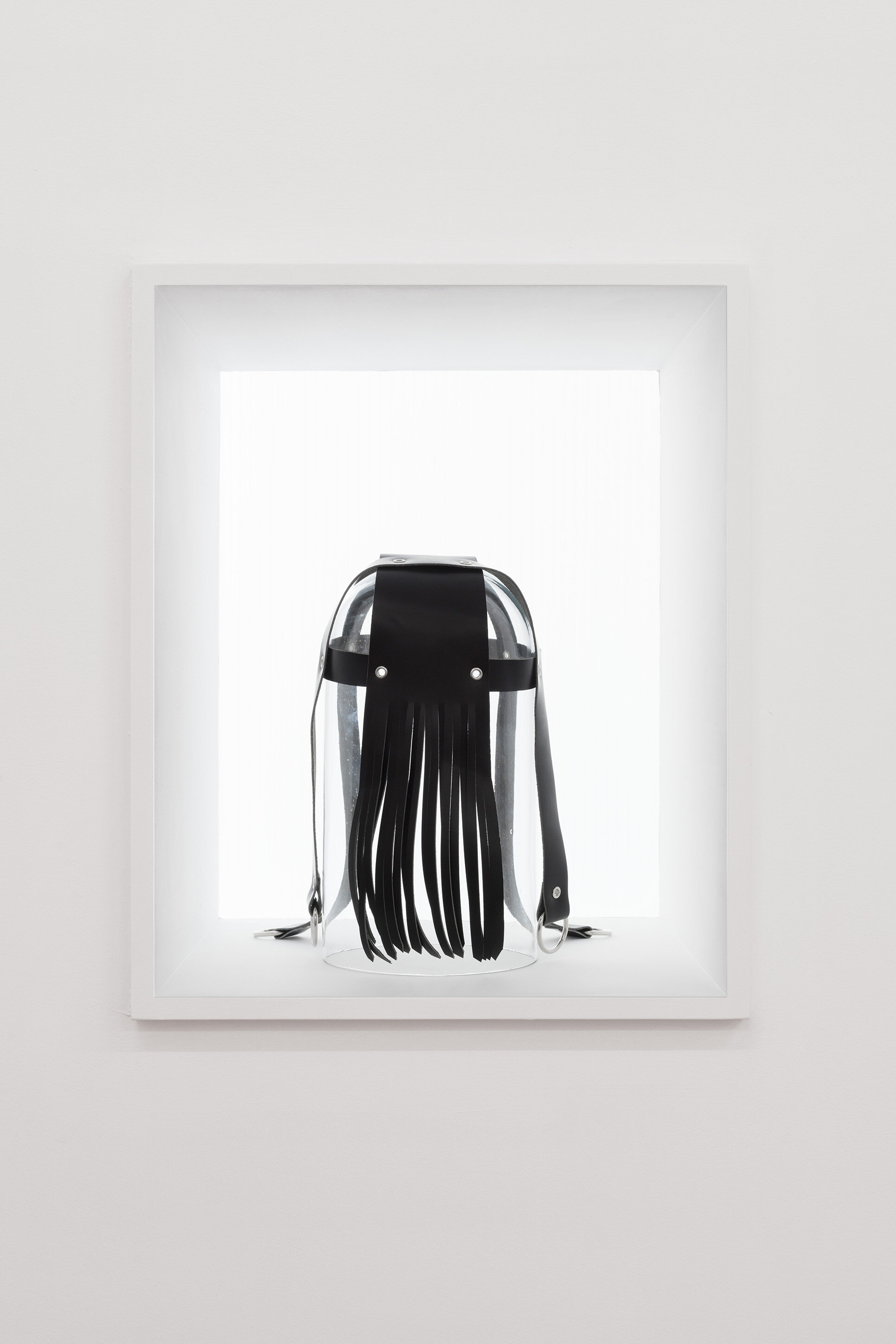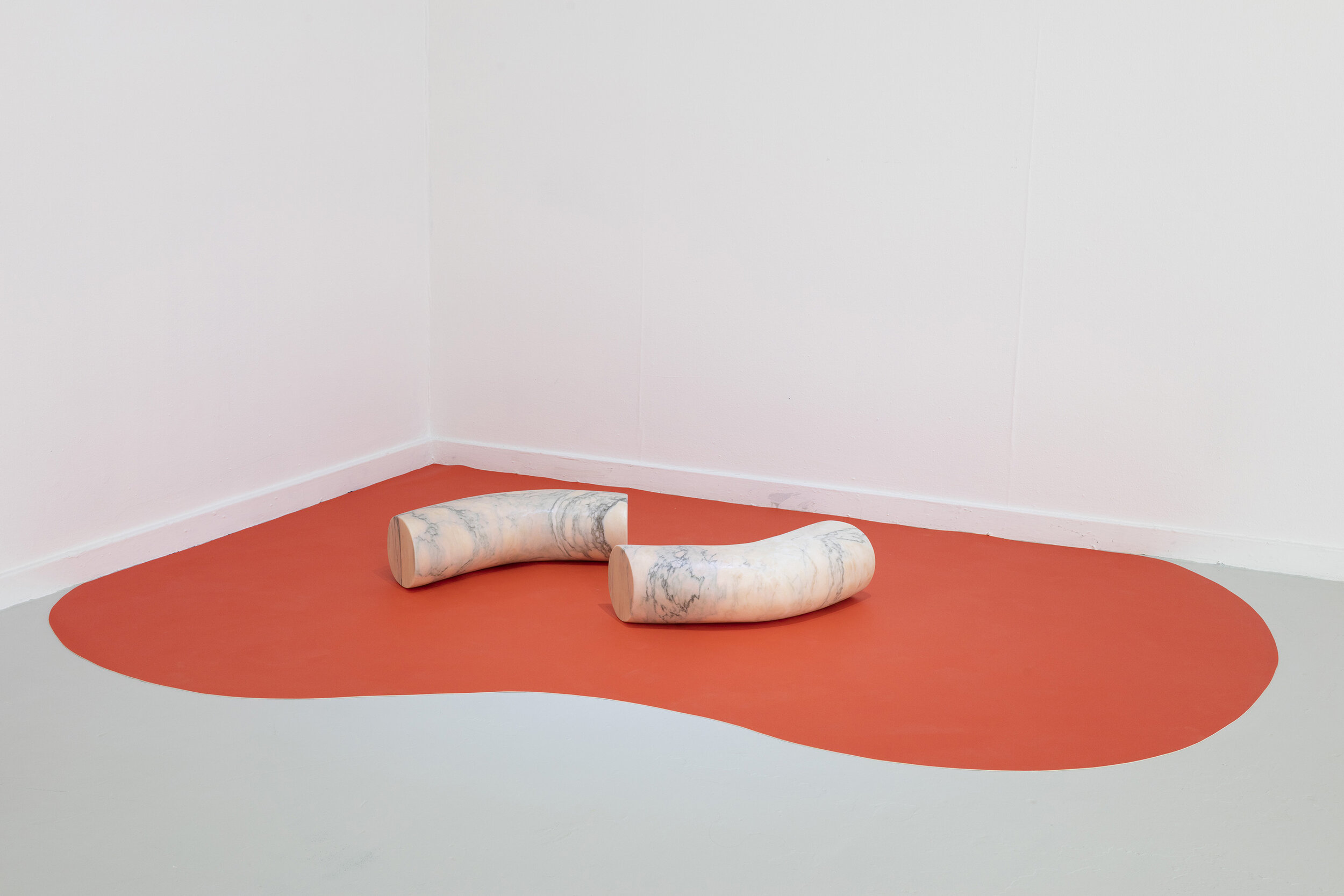Reading with the Mouth: A Conversation with Olga Ravn
Kore NR_01A2, 2017, Gob CA_02A1, 2017 and Terra CA_01A1, 2017, The Inner Space, Installation view, 2018. Photo: Anders Sune Berg
Rosie Ellison-Balaam talks to the Danish author about the significance of Lea Gulditte Hestelund’s sculpture in her novel The Employees and what it means to treat art not as an expression of individual genius, but as a collaborative process of making sense of the world around us. And they talk about gravitating between attraction and repulsion; about longing for ‘normality’ while wanting urgently to break away from tradition.
What was your process of writing The Employees?
I was contacted by an artist called Lea Guldditte Hestelund. She was going to have her first big solo show in Copenhagen and wanted me to write something for the programme. We met up and instantly had chemistry. She told me that she was interested in making forms that were not really human, but still living.
When I met Lea it was maybe a year before her exhibition and NASA had just chosen new astronauts. I saw these small videos on NASA’s Instagram and found it very inspiring; they were so happy, they were so loyal. At that time I was very unsatisfied with my own job, I worked in an office. So I asked Lea if I could do something about people working for the exhibition. When I began to write I quickly realised that it would be more than four pages, and we ended up doing a book. They were lying around in the exhibition space, with no name, as if the text was a part of the artwork. A month later it was published as a novel.
When did you first see Hestelund’s work and what drew you to it?
Lea had finished at the Academy of Arts in Copenhagen a few years before, her final work was very hyped; a performance alongside marble sculptures. I’d seen the work and I liked it a lot, but I didn’t really know anything else about her. I took a chance working with her and so did she. It’s not difficult to say yes to writing a couple of pages for a programme. I had no problem saying yes to that, but when I saw her studio, I felt very excited and inspired. I think she liked it too and now we are actually very great friends.
Lea Guldditte Hestelund, The Inner Space, Installation view, 2018. Photo: Anders Sune Berg
Is there a specific artwork, idea or theme of her work which resonated with you?
Both Lea and I were very interested in the idea of life. Something that is alive but not human. I think that’s why it is so ingenious that Lea worked with marble, because she makes sculptures that are of course very static, like in stone, literally, but they have something very organic about them. When you look at them you get the feeling that they are soft. As marble has been used to depict human bodies throughout art history, you have this feeling that you are reading a bodily material, even if the bodies are non-human. That really resonated with me.
How is Hestelund’s work present in The Employees, both directly and indirectly, in terms of actual objects, moods, or sentiments?
In the beginning Lea would show me sculptures, or work that was underway, and I would try to write little testimonies, statements about them. But then, pretty fast, I started to write about sculptures she hadn’t done. It was an agreement between us that she wanted me to write a text about a sculpture, but then add something that wasn’t there. I started writing all kinds of stuff and then began to build a world; the ship and the employees. I would email these texts to Lea as I was writing them and she would write back saying it reminds me of this and this. She would then make sculptures inspired by the writing. It was a very fruitful partnership. Lea took me to a meet a perfumer because she wanted a perfume for her exhibition. We are both interested in the other senses, not just sight.
Lea Guldditte Hestelund, The Arrival Room, Installation view, 2018. Photo: Anders Sune Berg
In the different rooms in The Employees you get a sense of all the senses being stimulated.
Exactly, I wanted to turn the hierarchy upside down, so that sight was not the most important sense. Smell was more important. This perfumer we visited had also made a smell of the Danish city of Aarhus and it actually really smelt like Aarhus! He told us a lot about perfumes, how they are made and the cultural history of scent. It was very important in the book.
In an interview with the Aarhus Art Museum, Hestelund stated, ‘Art makes my life make sense. It’s very individual whether you feel your life makes sense.’ Do you think that there is an element of her experience of life in the novel’s characters? Are the humans and humanoids aware of art and aesthetic experience?
That is so interesting. I guess I am like Lea in that I need to make art as a way to connect with the world.
In the novel there is of course not art, only work. We meet people who believe and have been told that there is only work, there is no free time; there is sleep and work. It is a wonderful thing, at least that’s what they are told, so of course there isn’t any dreaming, there isn’t any art making, there isn’t falling in love, and touch is also almost out of the picture. When the employees on the ship get these different objects, from a planet called New Discovery, it is like these objects suddenly awaken love, nostalgia, dreams and maybe also a longing to connect with the world around them, in a way that only art can make you connect.
Lea Guldditte Hestelund, Carriers, Installation view, 2018. Photo: Anders Sune Berg
Were there any other authors or artist which inspired aspects of the novel?
I was very inspired by Ursula K. Le Guin, the American science fiction and fantasy writer. Both Lea and I read her a lot whilst working together. We were very inspired by this small and wonderful essay she has, ‘The Carrier Bag Theory of Fiction’. She writes about how one of the first tools to be invented was not a weapon but a bag, and about a work of fiction being more like a bag filled with clutter, rather than like an arrow shooting forward. We were both very interested in how a work, and a collaborative work at that, looks if it’s more like a bag than a straightforward narrative. It was important for both Lea and I that it was collaborative. Inspired by Le Guin, we talked a lot about moving away from the idea of the artist as genius and away from the idea that art or the artwork coming from one person is this magnificent achievement. Ultimately moving away from achievement, into using art as a way of relating to the world, relating to each other to make it liveable, to make it bearable to be alive.
So at least for me when I began writing I thought the only reader would be Lea because I thought maybe the text will exist in the exhibition room, but after the exhibition is over, it will disappear and of course no visitors would read everything. It would only be Lea and that was very freeing for me. Writing without expectation, without having ideas about how the artist performs, how the author performs, how the text performs. It was like a holiday away from tradition. We talked a lot of time exchanging books, movies, pictures and clothes, all kinds of stuff, that we put inside some common intellectual room. I feel always that writing is like some kind of fist fight with tradition. So it was wonderful to not have to try so hard.
You play with the novel’s format through chronological statements, providing the reader with fragments of the narrative and setting. Could you tell me more about this choice of departure from the traditional form of a novel?
I wrote one novel before this one and two books of poetry. The first novel I guess on the surface is more traditional but in the mechanics it is actually weirder than The Employees. I think what I realised is, that what is interesting to me is if there is a certain, coherent drive through the book. The reader is pretty game for experimenting or being lost in the surface of the work. Of course there was a point I wanted to make, that you are sort of lost in space at the beginning of the book. I wanted to write characters you would identify with but that were not human. That was one of my big ambitions, how can I make someone identify with something we would consider a ‘thing’. Okay, so I will make an Android and a human, and I will make them both speak but I won’t tell the reader who is speaking when. So that was part of the form.
It is very true to the science fiction tradition, a very common form, to work with ‘found’ texts. I mean Ursula K. Le Guin and H. P. Lovecraft have used it. A lot of science fiction writers use the diary, the journal, the report or some anthropologic papers. I think it is Mountain of Madness by Lovecraft that ends in an ‘ahhh’ because he is eaten by a monster as he was writing it. There is a nod to a very traditional science fiction form but then of course I am also throwing in a lot of poetry. Science fiction is a very broad and very alive genre. We tend to have a lot of prejudice about what a science fiction novel is and that is coming from people who obviously haven’t read science fiction.
I would love to write normal books. I’d like to write one of these very big, broad, normal books; I would like to speak to a lot of people, but I’m just, you know, weird. No matter how hard I try to do something normal it’s strange and I just have to accept that. I have a good friend who is a writer too and every time I’ve written something, I ask him if he is going to read it, saying ‘I don’t know, I don’t know about this, maybe it’s too boring, it’s too traditional.’ I say it every time and after he reads it, he’s like ‘Olga, this is totally weird! I don’t understand what’s going on’. I think it’s an internal struggle I have not only with writing, but everywhere in life, it is this juxtaposition between longing to be average and hating normality and tradition. It’s pretty difficult.
Lea Guldditte Hestelund, Leather Carrier (from The Carriers series), Arrival room, Installation view, 2018. Photo: Anders Sune Berg
In your recent conversation with Yelena Moskovich, the two of you spoke about feeling superficial and synthetic in relation to the apparent differences between the humans and humanoids in the novel. Can you elaborate on this—do you think we have reason to feel ‘synthetic’?
What she asked me was like more the feeling that they wanted to be genuine. In all my books I’ve been interested in finding—I know it is not possible—but the area between what you are and what you are told. I remember that I went to therapy at some point while writing it and they had this very instrumental way of talking about feelings which made me almost alienated from my own emotional life. As a writer I thought this is a very interesting position. It is true that sometimes I get a feeling of loss about who I am, I think it is very common actually, having the feeling of being plastic or a knock-off. Maybe that feeling arrives out of some kind of understanding that our idea of what is human is not quite adequate. Actually an idea of what a human is isn’t big enough to actually hold what a human is. You get the sense you are moving in the outskirts of what a person should be, and that interested me.
Let’s take an example of what a woman is. How I, as a woman, live in the world, and am met by a set of ideas and expectations on how to act and react, but also on how my emotional life should be. When I meet those expectations, and when they don’t correlate, it can give you the feeling of theatre, of playing a role. You try so much to play the part you are assigned that everything that’s not in the part seems like a disturbance. We meet characters in this book that have been told very strict narratives about themselves and they believe them, even though they are not true. That leads to conflict and to having a feeling of being synthetic or false. They have been stripped of the ability to think for themselves and that’s what they are learning throughout the novel.
Whilst reading, it felt like you allowed for more visual descriptions around the objects. Likewise, more visceral language appeared around descriptions of the human and humanoid forms. What effect did you want these sensory passages to have on the reader?
I think that in order to make the reader identify with something that isn’t human it would make sense to activate their senses. In all my books I am very interested in activating the body whilst reading. So if I write coffee, you will taste and smell it, and if I write shit and coffee, you can also hold the same smells or tastes in your head. With literature it’s possible to activate the body when you are reading, even though you are sitting still and you think you are only using your brain. You are reading with your senses. It is a powerful tool when you are writing, allowing me to make art where the mind isn’t as centred.
Lea Guldditte Hestelund, The Inner Space, Installation view, 2018. Photo: Anders Sune Berg
I am obsessed with taste—maybe I didn’t ever leave the oral phase as a child. In the book someone says, ‘I want to carry it in my mouth but I know it’s too big to have in my mouth’ or something like that. It’s a feeling I have a lot. Now, I have a small baby, and of course he is using his mouth as a hand. That sensory experience is something I am very interested in, how we understand the world with the body, with the hands, the ears, the mouth, the nose; not just the eyes and the mind.
We all carry very powerful sensory memories from when we were children; of how snow feels in the mouth, how metal feels in the mouth, how they taste. These are very important experiences which we carry with us, so to activate them in a book which is so removed from Earth was interesting.
We as humans are very connected to the earth, the planet, but also the soil. The book experiments with the idea of what happens if we remove people or humans from their land. It leads to a sense of loss and to motion-sickness. There is an overlap of sense and land. It is almost as if your senses don’t work without the weather; I realised that if I had to stay on a spaceship for a long time, the lack of weather would really mess me up. I wanted the book to be a reconnection with the ecology of Earth. Something that the human passengers on the ship are missing is being buried in soil. There is some correlation between the human body and land.
The humanoids are very childlike in the way they sense, at the ending of the book one of them says, ‘I think this is grass, at least it looks like what I’ve been told is grass’. Whereas the human employees have tired senses – they can only relate to things through nostalgia.
Lea Guldditte Hestelund, The Inner Space, Installation view, 2018, Photo by Anders Sune Berg
Alongside your textural and fleshy descriptions, colloquial nicknames were given to some of the objects and rooms. Some psychologists believe in naming our anxieties and fears as to feel more at home with them and be more accepting of them—do you think we are more readily able to accept an object as for instance ‘friendly’ or ‘good-natured’ if we name them?
Of course, yes. I think that naming is, at least if it’s a personal name, immediate in creating intimacy. Language plays this part in the book. When these objects, which we are still looking for words for, come aboard the ship, they enter into a world that is extremely categorised, like human or humanoid, yet suddenly there is something that defies categories. They try to catalogue them but of course the crew begin making up their own colloquial names. It is very difficult to talk about something if it doesn’t have a name. It shows us that they are some kind of living creatures, or at least perceived as such.
Being able to name stuff is actually the first step of the rebellion on the ship. At the beginning of the novel, a committee asks employees to talk to them about how their work is going. This is a big mistake made by the committee, because when you ask your employees how they are actually doing, they will tell you and they will begin to reflect on their feelings, experiences and relationships. That reflection through language is the first thing that changes on the ship. The committee has their own narrative where the objects we find on this planet come aboard the ship and everything changes, but maybe the shifting point it is just as much when they ask the employees to talk. To give them language, to name objects, is part of what makes them question their place.
There are many eggs in this novel, along with other almost primordial descriptions of slippery life forms—things that are magnetically repulsive to the point that they become incredibly captivating and thereby attractive. Can you tell me more about how you work with attraction and repulsion?
These are two different themes in the book, one theme is the egg, or sack of eggs. Because half of the characters in the book are made artificially, I thought it was important to write about how a body is made. Taking from Ursula K. Le Guin, I was interested in using the womb and eggs as metaphor, but not just the egg, a cluster of eggs. Often we have the picture of one egg, one individual, but The Employees is about a group of people speaking. I wanted to move away from this obsession with the individual. This book could also be read as an allegory of child-rearing; there is a lot about carrying, taking care of stuff, doing the work of production.
Lea Guldditte Hestelund, Cauda PR_02A2, 2018, The Inner Space, Installation view, 2018. Photo: Anders Sune Berg
The other thing relating to repulsive stuff I had in my bag of tricks was something called trypophobia. It is a phobia which is not recognised by medical boards, but it is a thing: phobia of clusters, of organic repetitive patterns that make your skin crawl. If you’ve had smallpox, measles or seen a cluster of spider’s eggs, you know this feeling of spots. This was a sense I really wanted to give the reader—we’ve talked so much about how to activate the body—and I liked to give the feeling of making your skin crawl. There is a whole ten pages about skin doing weird stuff. I am sure I have some kind of trypophobia.
On attraction and repulsion, I guess it gives me a great physical feeling if I am able to write a sentence that is both things at the same time. I am also a person who loves the site of blood, not like in a horror movie, but I am seldom repulsed by it. I am just very interested in it and it gives me a physical feeling that I like. A lot of people say my books are filled with slime, mucus and eggs, saying it is repulsive.
I like to sit with the thought that right now we have thousands of eggs inside of us. Clusters and clusters and clusters of tiny eggs. Also even more bacteria, we have so much bacteria going on. You could almost say we are vessels for these lifeforms. As such, The Employees is about moving away from the singular, as it is a group of people talking, but also viewing your own body not as a central thing but as a home for yeast, bacteria, blood and virus. I’m not making it up, it’s not a metaphor. It’s real life.
Images from Consumed Future Spewed up as Present, 2018 at Overgaden, Institution of Contemporary Art, Copenhagen, a total installation by Lea Guldditte Hestelund. The exhibition was a physical sci-fi told through three architectonial parts: The Arrival Room, The Corridor, and The Inner Space introducing marble sculptures, leather Carriers, furniture, textile, scent, fur, and Olga Ravn’s science fiction novel.
The Employees is out now on Lolli Editions.








